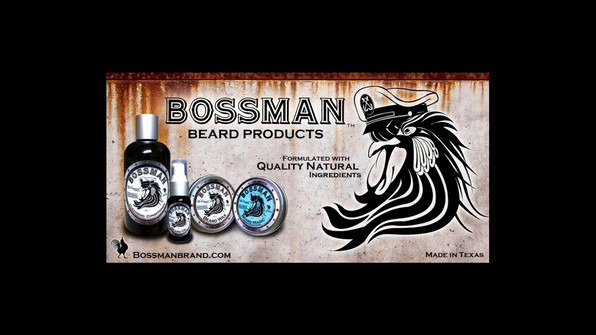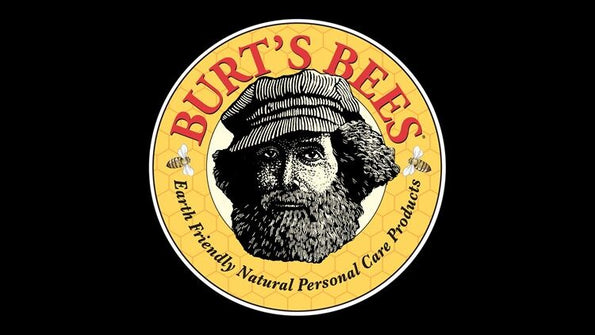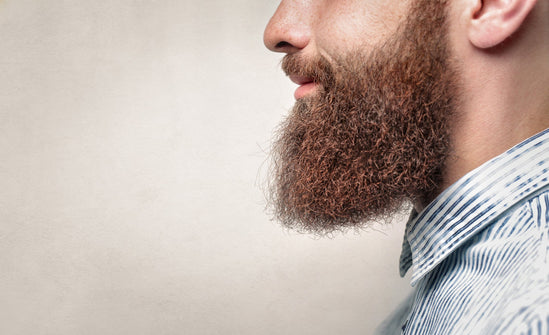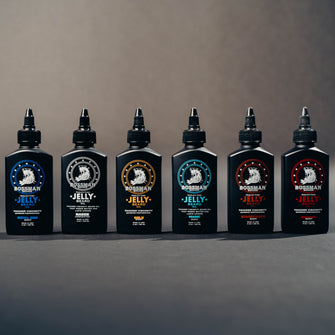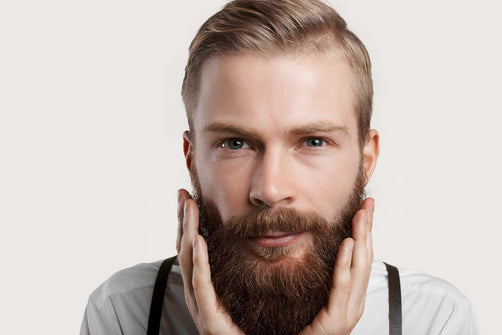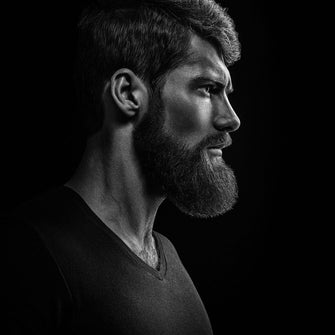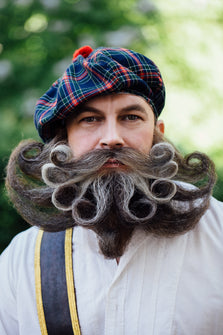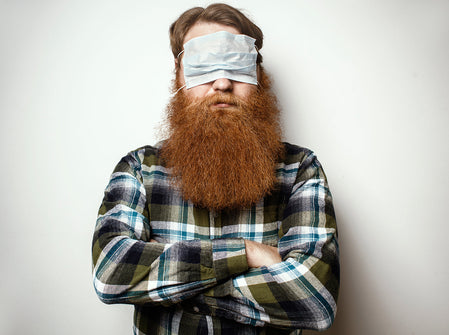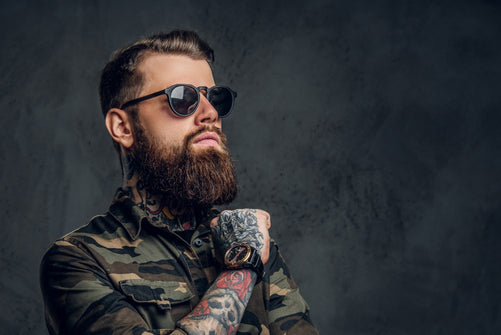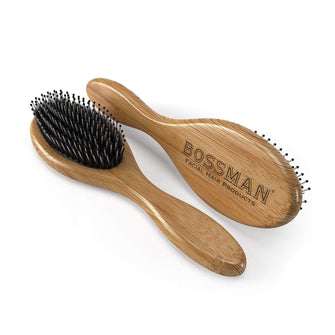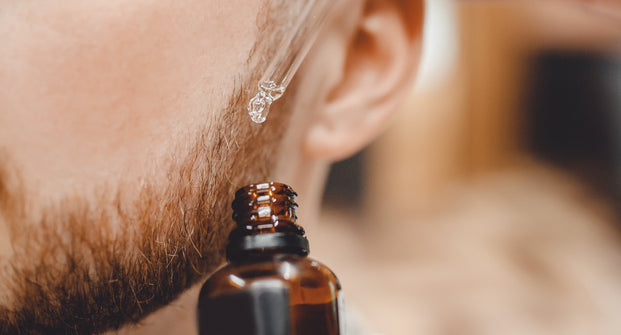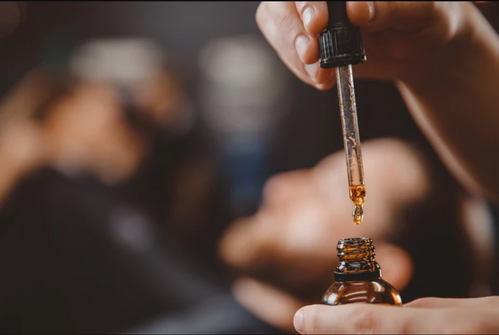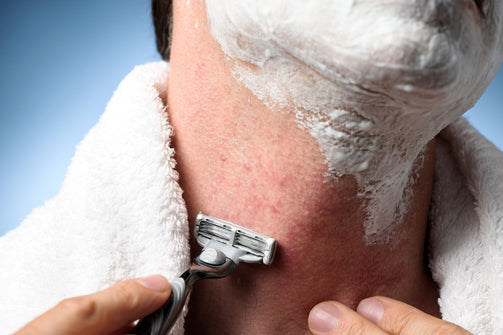If you are like most men, you probably don’t pay much attention to your neck when you shave. And we get it—we mostly focus on how our face looks, so our necks usually get little to no love. If you are one of these men, however, maybe you should rethink your whole shaving routine.
Not only is the neck area sensitive and more prone to irritation, but missing a few neck hairs here and there can make you look incredibly unkempt and sloppy, especially if you are growing a beard. That’s why every man with a beard must dedicate a little more time to their neck, so If you are wondering, “Should I shave my neck when growing a beard?” the answer is yes, and here’s the right way to do it:
Choose the Right Tools

To get the best possible shave on your neck or face, the first thing to consider will always be the type of razor you should be using. There are two obvious choices when it comes to your neck: The double-blade razor and the more classic, single-blade safety razor. If you are going for a clean look, we mostly recommend using the single-blade safety razor, as it can be easier to maneuver around the neck, and it does a better job of preventing irritation and burns.
Having the right tools is just as important as technique when it comes to neck shaving. Here are some essential tools and their purpose:
Quality Razor: The razor is the star of the show, so choose one that fits your comfort level and budget. There are several types to choose from:
Safety Razors: These are a great option for those who want a close, quality shave without spending too much money. They have a protective device between the blade and skin, making them a safer option than straight razors.
Cartridge Razors: These are very popular due to their convenience and ease of use. They typically have multiple blades for a close shave.
Straight Razors: Also known as cut-throat razors, they offer an extremely close shave. They require a steady hand and some experience, so they're often used by shaving enthusiasts or professional barbers.
Sharp Blades: Regardless of the type of razor you choose, it's essential to ensure that the blades are sharp. Dull blades can lead to tugging, cuts, and irritation.
Shaving Brush: A shaving brush is used to apply shaving cream or soap. It helps to lift and soften the hair, and it also exfoliates the skin, removing dead skin cells and reducing the chance of razor burn and ingrown hairs.
Shaving Cream/Soap: These products provide a cushion between the blade and your skin, reducing friction and allowing for a smoother shave. Soap also moisturizes the skin and soften the hair, making it easier to cut. Look for products that are free from harsh chemicals and have moisturizing properties.
Exfoliating Scrub: An exfoliating scrub is useful for prepping the skin before shaving. It removes dead skin cells and dirt that can clog the pores and lead to razor burn.
Aftershave/Moisturizer: A good aftershave or moisturizer soothes the skin after shaving, preventing dryness and irritation. Look for products that are alcohol-free, as alcohol can dry out the skin.
Shop After Shave Cream from Bossman
Hot Towel or Warm Water: Hot towels or warm water are essential for prepping the skin and hair before shaving. Warm water or steam helps open up the pores and softens the hair, allowing for a smoother shave.
Remember, investing in the right tools and taking care of them can make a significant difference in the quality of your shave and the health of your skin.
How to Trim a Beard Neckline
Now, if you have a beard, you may not need a razor, but you must know how to trim a beard neckline. If this is your case, then a trimmer might be the best choice for you. If you are going with a trimmer, make sure it comes with adjustable guards so you can shape your beard more precisely. You should also use a more modern trimmer that does not heat up so rapidly, as hot trimmer blades can irritate the skin around the neck.
Careful Preparation
Choosing the right razor or trimmer is only the first step when it comes to gathering the right tools for a perfect neck shave. In addition to a good, reliable razor, your shaving routine should always include creams, lotions, pomades or balms to help prepare your neck for a smoother shave while also protecting your skin.
Make sure you have a cleanser specifically made for facial hair, though natural face cleansers can also be used. This ensures your skin and beard are free of excess oils or dirt, which may cause the razor to get stuck and cause unwanted accidents. After thoroughly cleansing your face and neckline beard, you may want to try applying some beard oil. Many men have found that using beard oil on the neck before shaving cream can reduce redness and irritation.
The final step in your pre-shaving routine should be a shaving cream to lubricate and protect the skin during shaving. But please, avoid anything that comes out of a pressurized can! These creams and gels can often dry out the skin, so it’s better to go with a naturally-formulated cream if possible.
The Right Techniques in Shaving the Neck

When it comes to technique and skills for shaving your neck and jawline beard, the main point is to keep your strokes and overall motions gentle and smooth. As always, your first strokes should go with the grain without repeating strokes. Strokes should be light to avoid irritation, and they should not overlap—or at least overall as little as possible.
This is not an easy task, given the sensitivity and contours of the area, but with the right steps, you can achieve a smooth and comfortable shave. Here's a step-by-step guide to help you perfect the art:
Prepare Your Skin:
The first crucial step is preparing your skin for the shave. Start with a hot shower if possible. The steam from the shower opens up the pores, softens the hair, and allows for a smoother shave. If a shower isn't an option, dampen a towel with hot water and place it on your neck for a few minutes to achieve the same effect. For an even better prep, consider gently exfoliating the skin on your neck with a scrub. This process removes dead skin cells, dirt, and oil, reducing the chance of the pores getting clogged and leading to razor burn.
Apply Shaving Cream:
Once your skin is prepared, apply a quality shaving cream to the neck area. This product acts as a protective layer between the razor and your skin, which helps prevent cuts and irritation. Shaving cream also softens the hair and makes it easier for the blade to glide across the skin. Don't rush this step - let the cream sit for a minute or two to let it further soften the hair and condition the skin.
Mind Your Technique:
When it comes to the actual shaving, your technique is crucial. First, always use a sharp, clean razor - dull blades can pull on the hair and cause discomfort or cuts. Whether you prefer a safety razor, a cartridge razor, or a straight razor, ensure the blade is sharp and the razor is clean. As for the shaving direction, always shave with the grain (in the direction of hair growth) to reduce irritation. Remember that the hair growth pattern on the neck might not be uniform, so pay close attention. Finally, use short, light strokes when shaving - you don't need to apply much pressure. The weight of the razor itself is typically enough to cut the hair.
Cleanse and Dry:
After you're done shaving, rinse your neck thoroughly with cool water. This helps close the pores and reduce potential inflammation. When drying the area, be gentle - pat it dry rather than rubbing, which can cause irritation.
Post-Shave Care:
The final step is taking care of your skin post-shave. Apply an alcohol-free aftershave or a moisturizer to soothe the skin and prevent dryness. This step helps to maintain the hydration of the skin and reduces the chance of irritation or razor bumps and burns. It's a perfect way to finish off your shaving routine and ensure your neck feels as good as it looks.
TIP: Lather your neck first and shave it last. This gives the stubble more time to hydrate and soften, leading to a better neckline beard and overall better shave.
After your first set of initial strokes, rinse your neck with warm water and re-lather before continuing to shave. This time, shave across the grain to get rid of all the hairs you missed and achieve a closer shave. If you still need to reduce your stubble after that, rinse and lather again before continuing with additional strokes.
If you have sensitive skin, be careful going against the grain. If you feel any instant discomfort or notice signs of irritation, simply start going with the grain again.
Don’t Forget Your Post-Shave Routine
For the best shaving results and optimal skin protection, you must have proper shaving products and routine. Right after you are done shaving, rinse the neck thoroughly with warm water. This will help remove any lingering lather residue and hairs that might clog pores. For the finishing touch, use a balm or lotion to soothe and refresh the skin on your neck. Just remember always to choose products that use fragrances derived from natural ingredients like essential oils.
Let’s face it; you don’t need to dedicate so much attention to your neck every time you shave, especially if you are not growing a beard or if you are just staying home. However, these tips mentioned in the article can make a huge difference when you are out on a date or having a job interview, so it’s important to keep these tips in your repertoire for whenever you may need them.

